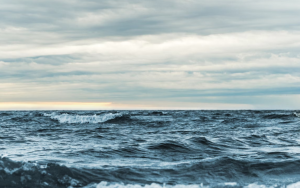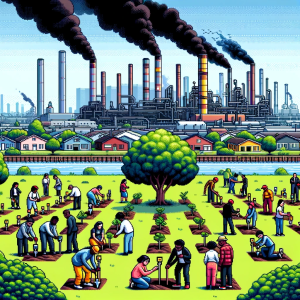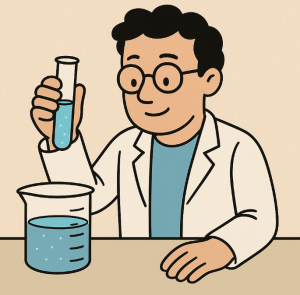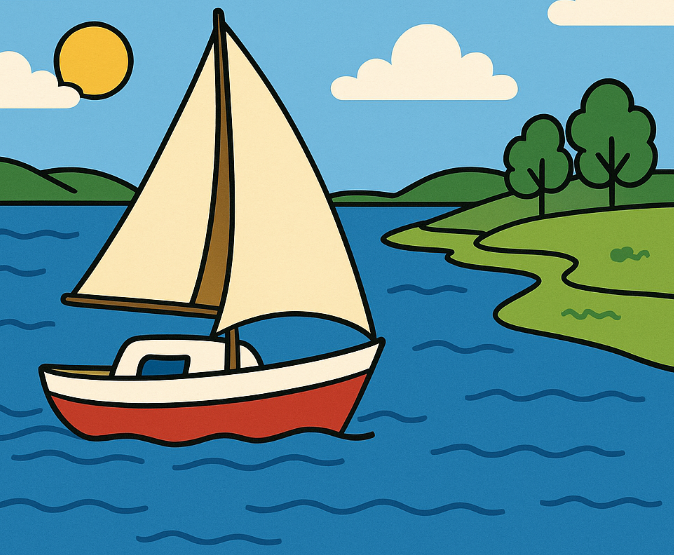
Chesapeake Bay Dead Zones: Causes, Impacts, and Solutions
A few years ago, I got into ultra-low-budget found footage movies. You know the convention. Someone is recording while a disaster or horror is unfolding. Think Blair Witch. This article, coincidentally, also takes place in Maryland.
So, imagine that a small town on the Chesapeake Bay’s eastern shore is plagued by mutant parasites, turning the waters deadly.
That’s the plot of the 2012 eco-thriller The Bay. But while the film’s tongue-eating isopods are fake, it highlights a very real threat: large stretches of the Chesapeake Bay turn into “dead zones” each summer, almost completely lacking life. In fact, scientists have observed that poor water quality, not movie monsters, is the real villain behind the Bay’s problems. These dead zones are a true environmental horror story, suffocating fish, crabs, and oysters in one of America’s most vital estuaries. Let’s examine the science of Chesapeake Bay’s recent environmental challenges, focusing on what causes these dead zones and what we can do to reverse the damage.

What Is a “Dead Zone” in Chesapeake Bay?
A dead zone is an area of water with very low oxygen levels, where most marine life cannot survive. According to scientists, a dead zone has less than about 2 milligrams of oxygen per liter. This tiny amount of oxygen is insufficient for fish, crabs, oysters, and other creatures to breathe. Animals capable of swimming tend to escape these zones, while those that cannot may suffocate. Every summer, parts of Chesapeake Bay, especially its deeper middle sections, develop these low-oxygen conditions, turning into underwater deserts where life is hard to sustain. Locals often call this event the Bay “holding its breath” because the water is so deprived of oxygen.
Dead zones aren’t limited to the Chesapeake. They occur in water bodies around the world; for example, the Gulf of Mexico has a well-known dead zone. However, the Chesapeake Bay’s dead zone is one of the largest and most studied in the United States because the Bay is our nation’s biggest estuary and a crucial habitat for many species. The term “dead zone” may sound dramatic, but it’s sadly accurate – during bad years, large parts of the Bay’s lower waters have almost no aquatic life. (In The Bay film, a character even claims that 40% of the Chesapeake is lifeless, referring to these oxygen-depleted waters)
What Causes Dead Zones in Chesapeake Bay?
Pollution leads to large algae blooms that consume oxygen in the water. This process starts with nutrient pollution, mainly nitrogen and phosphorus from human sources. When it rains, these nutrients wash from land into the Bay’s rivers and tidal waters. Key sources include agricultural runoff (fertilizers and manure), urban and suburban runoff (lawn fertilizers, pet waste, street pollutants), and wastewater discharges. In 2023, agriculture alone contributed about 45% of the Bay’s total nitrogen pollution, making it the largest source. Other contributors are sewage treatment plants, septic systems, and nitrogen from air pollution, such as vehicle exhaust and power plants, which can fall with rain. All these nutrients provide food for algae in the water.
During late spring and summer, warmer weather increases levels of nitrogen and phosphorus, which fuel rapid algae growth: tiny, plant-like organisms. These algal blooms can turn Bay waters green, brown, or even reddish, creating murky conditions often described as “pea soup.” While some algae produce toxins harmful to fish, the main issue arises when the blooms die off. Algae have short life cycles; after thriving, they die and sink to the bottom. There, bacteria decompose the dead algae, consuming oxygen in the process. If a large amount of algae dies suddenly, bacteria deplete oxygen faster than it can be replenished from the air, leading to very low oxygen levels (hypoxia) in the deeper Bay areas, forming dead zones. Several environmental factors make the Chesapeake particularly prone to these zones. Summer heat is one: warm water holds less oxygen than cold water, and also speeds up algae growth. Recent hotter summers have facilitated oxygen loss in deep waters. Calm weather can worsen the situation by allowing water to stratify, where a layer of warmer, fresher water stays on top of cooler, saltier water at depth. This stratification acts like a lid, preventing oxygen from mixing down from the surface, so once the bottom oxygen is depleted by algae decay, it becomes difficult to restore under these conditions.
Heavy rainfall can also increase nutrient runoff into the Bay, especially during years of intense spring storms after snowmelts or heavy rains. These events wash fertilizer and pollutants from farms into the water, leading to larger algal blooms and bigger dead zones. It’s a fine balance: too little rain means fewer nutrients entering the Bay, but also less water mixing; too much rain causes nutrient surges. The worst-case scenario is a wet spring combined with a hot, calm summer, where abundant nutrients promote algae growth, and stagnation allows hypoxia to develop.

A photograph shows dark streaks of an algal bloom discoloring the Chesapeake Bay’s waters. Such blooms feed on excess nutrients and lead to oxygen-starved “dead zones” when the algae die and decompose.
The science behind dead zones is well-established. Excess nutrients like nitrogen and phosphorus are the primary causes of the Chesapeake’s oxygen deprivation. This pollution mainly comes from human land use within the Bay’s large watershed, spanning six states (New York, Pennsylvania, Delaware, Maryland, Virginia, West Virginia) and Washington, D.C., all of which drain into the Bay. For many years, fertilizers and wastewater from this region have flowed downstream, creating dead zones every summer. Meaning, humans unintentionally created this problem. Fortunately, since we caused it, we also have the ability to find solutions, which we’ll explore soon.
Why Do Dead Zones Matter for the Bay’s Wildlife and People?
Dead zones are often invisible from above since low oxygen levels can’t be seen with the naked eye, yet their impact on the Bay’s ecosystem is profound. Underwater, life either suffocates or escapes when oxygen drops too low. Fish capable of swimming try to flee, sometimes aggregating in shallower waters or tributaries with higher oxygen. Crabs, which walk on the Bay’s bottom, crawl upward into crab pots or shallow areas seeking oxygen. In extreme cases, large fish kills occur, like in a Baltimore Harbor tributary in 2024, where about 24,000 fish died due to heat, algal bloom, and low oxygen levels.

Iconic species such as striped bass, blue crabs, and oysters lose vital habitat in dead zones; they may leave or become stressed, increasing their vulnerability. Since oysters and shellfish are stationary, prolonged low oxygen can wipe out entire reefs in deeper parts of the Bay. Even if animals escape, the oxygen deficiency destroys much of their food sources. Bottom-dwelling creatures like clams and worms die, creating a biological desert. Recurring dead zones have been linked to declines in fisheries and overall Bay health. The Chesapeake’s submerged aquatic vegetation, essential for a healthy ecosystem, also suffers. Algal blooms that cloud and die in hypoxia leave the water murky and can suffocate grass beds. Historically, large dead zone events have caused extensive die-offs of Bay grasses and shellfish. This creates a vicious cycle: fewer grasses and oysters diminish natural water filters, worsening nutrient and pollution issues.
Dead zones impact people as well. A thriving Chesapeake Bay is vital for local industries like fishing, crabbing, oyster harvesting, and tourism. When large areas of the Bay become uninhabitable for marine life, commercial catches can drop.
Recreational activities suffer too. No one wants to boat or swim in a stinky, algae-covered creek or see dead fish wash up. Moreover, the Bay’s issues can signal wider environmental problems affecting human health, such as contaminated well water caused by agricultural runoff or toxins from harmful algal blooms. Ultimately, a dead zone signals an imbalance in the Bay, and restoring it is essential for both the ecosystem and the local communities.
Recent Trends: Is the Chesapeake Bay’s Dead Zone Getting Better or Worse?
Here’s encouraging news in this science story: Chesapeake Bay’s dead zones have recently shown signs of improvement. Thanks to targeted pollution reduction efforts and some assistance from natural factors, the Bay’s dead zones have been smaller on average over the past few years than in the 1990s and 2000s. 2023 was especially notable. The summer dead zone was reported as the smallest since monitoring began in 1985. Data from the Maryland Department of Natural Resources and the Virginia Institute of Marine Science indicate that the 2023 dead zone measured about 0.52 cubic miles in volume. This is nearly half the historical average size of approximately 0.97 cubic miles from 1985 to 2022. Practically, this means tens of thousands of acres of the Bay’s bottom that would normally lack oxygen were healthier in 2023.
Why was 2023’s dead zone so small?
Scientists point to a combination of reduced nutrient input and favorable weather conditions. Throughout most of that year, rainfall was below average, leading to less polluted runoff entering the Bay. Streamflow data confirmed significantly less freshwater and fewer nutrients flowing into the Bay than usual, which diminished the fuel for algal blooms. Moreover, despite 2023 being one of the hottest summers on record in the region, wind conditions remained typical. Proper wind mixing likely prevented the Bay from stratifying excessively, and some storms later in the season helped oxygenate the water. The result was improved oxygen levels, with early August 2023 recording the lowest hypoxic water volume for that time of year. By October 2023, monitoring showed no hypoxia, indicating the dead zone had completely disappeared.
However, one good year doesn’t mean the problem is solved. The following year, 2024, told a slightly different story. The Chesapeake Bay’s dead zone in summer 2024 was about average in size. compared to long-term trends. It started earlier than usual (developing in May and peaking by June) and was initially larger than normal, likely due to calm conditions in early summer. Then nature intervened: the remnants of Hurricane Debby swept through in early August 2024, churning the Bay’s waters. This storm-induced mixing caused a dramatic drop in the dead zone – oxygen levels rebounded after the hurricane’s winds stirred the water. The hypoxic area then remained smaller until the season ended in early October. Overall, 2024’s dead zone lasted a shorter time than usual (because the hurricane helped end it early), but its total volume over the season was still a bit higher than the long-term average. In other words, 2024 was a more typical year: the Bay did experience a substantial dead zone, just not for as long as it might have without that storm.
Recent years show cautious optimism about Bay-wide oxygen levels, with hypoxia at or below average, suggesting nutrient reduction efforts are working. Improved wastewater treatment and farming practices have cut nitrogen entering the Bay by about 15% since the 1980s, reducing algae outbreaks. In 2023, a scientist noted that low hypoxia levels may finally confirm these strategies are improving water quality.
Reversing the Damage: What Can Be Done to Shrink Dead Zones?
The only effective method to eliminate dead zones is to tackle the underlying issue: nutrient pollution. By decreasing nitrogen and phosphorus inputs into Chesapeake Bay, we can starve the algae responsible for large blooms. Reduced algae numbers result in less decay and increased oxygen levels in the water. Experts concur that avoiding nutrient excess is the most effective way to control the dead zone’s extent. What strategies can help accomplish this? Below are the key approaches currently implemented and suggested.
Upgrading Wastewater Treatment Plants: Over the past decades, many cities and towns within the Chesapeake watershed have upgraded their sewage treatment systems. Modern technologies now remove a large portion of nitrogen and phosphorus from wastewater. For instance, the wastewater sector has cut nitrogen discharges to the Bay by approximately 75% since the 1980s. Continued investments like repairing old infrastructure and updating treatment processes will help further decrease pollution. Each gallon of sewage that’s properly treated results in a smaller nutrient load entering the Bay.
Agriculture Best Practices: Since nearly half of the nitrogen entering the Bay originates from farms, it is essential to collaborate with the agricultural community. Farmers are increasingly implementing techniques such as cover cropping, which involves planting off-season crops to absorb leftover fertilizers; streamside buffer zones consisting of grasses and trees along waterways to filter runoff; and more targeted fertilizer application to ensure crops efficiently utilize nutrients and reduce excess runoff. Additionally, efforts to decrease manure runoff from large livestock operations through improved storage or treatment are also vital. These practices can significantly reduce the amount of nitrogen and phosphorus washing off fields into streams.
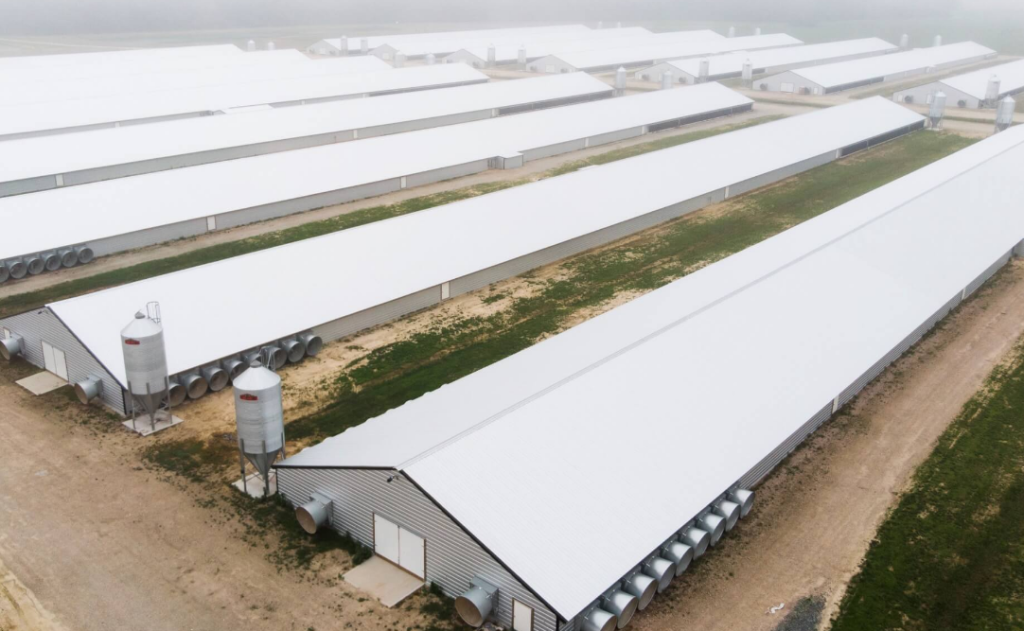
Managing Stormwater and Urban Runoff: In developed areas, managing runoff is vital. Solutions include green infrastructure such as rain gardens, bioswales, green roofs, and permeable pavements that catch or slow rainwater. Improved stormwater systems can capture and treat runoff before it reaches rivers. Communities are also restoring urban streams and wetlands to serve as natural filters. Even simple measures like planting more trees in cities can help, as trees absorb nutrients and water. Since stormwater is the main pollution source in some regions, addressing this issue is essential.
Restoring Oyster Reefs and Wetlands: Oysters are often called “ecosystem engineers” because a single oyster can filter dozens of gallons of water daily, removing algae and silt. Restoring oyster populations in the Chesapeake through reef restoration and oyster farming can enhance water clarity and reduce excess algae, consequently supporting oxygen levels. Wetlands, including tidal and upstream areas, serve as natural kidneys for the Bay by absorbing nutrients and slowing runoff. Many organizations are actively restoring wetlands, planting forest buffers, and protecting natural areas around the Bay. These efforts help lower nutrient levels, provide habitat, and boost resilience against climate change impacts.
Cross-State Collaboration and Enforcement: Since the Chesapeake Bay watershed spans multiple states, no single community can tackle the problem alone. The Chesapeake Bay Program partnership – which includes states from New York to Virginia, the EPA, and other agencies – created a “Clean Water Blueprint” with specific reduction targets for nitrogen, phosphorus, and sediment set for 2025. Although not all goals will be met on time, this framework has driven progress. Moving forward, increased accountability and collaboration are essential. For example, upstream states like Pennsylvania, which have rivers carrying farm runoff into the Susquehanna, need support and pressure to adopt better conservation practices. Downstream states such as Maryland and Virginia must also address pollution and continue funding restoration efforts. Scientific evidence clearly indicates that only through interstate cooperation can the dead zone be permanently reduced.
Community Actions and Individual Choices: Finally, residents of the Bay watershed play an important role. Homeowners can reduce runoff by using less lawn fertilizer, maintaining septic systems properly, and planting native species or rain gardens. Supporting local groups like riverkeepers, participating in tree-planting projects, or joining cleanup events can make a difference. Our driving habits also matter. Cars emit nitrogen air pollution, so driving less or choosing cleaner vehicles can help. Every small action, when multiplied by millions, can significantly decrease pollution. Public awareness is crucial: the more people understand that land activities impact the Bay, the better our chances to protect this vital national treasure.
Its progress is evident, with the Bay region reaching approximately 50-60% of its nutrient reduction targets by 2022: about half the nitrogen and more than half the phosphorus reductions needed by 2025. This interim success likely helped lessen recent dead zones. As the 2025 deadline approaches, experts are contemplating the next steps. In December 2024, leaders from all Bay states convened to discuss future plans post-2025. There is a widespread agreement that additional efforts are necessary, including supporting farmers with conservation practices, modernizing remaining sewage treatment facilities, and tackling increased urban and suburban runoff.
Looking Ahead: Towards a Healthier Chesapeake Bay
The Chesapeake Bay dead zones tell a cautionary tale about how human activities can threaten an ecosystem, while also demonstrating how science and action can aid recovery. If pollution is considered the main culprit, then our aim is to combat it through robust science, effective policies, and community involvement. We’ve gained extensive knowledge about the causes of dead zones and how to address them. Today, in the mid-2020s, Chesapeake Bay shows signs of recovery: underwater grasses are returning in some areas (reaching their highest extent in decades in 2023), water clarity is improving, and recent summers have seen smaller dead zones compared to the 1990s. These developments indicate that our efforts from improved farming practices to better water treatment are making a positive impact.
Despite some progress, the recovery of the Bay remains delicate. Climate change may pose new threats, and pollution control efforts need to adapt to a changing environment. The film The Bay concluded on a bleak note, but real life doesn’t have to follow suit. With ongoing dedication, we can reduce, maybe even eliminate, dead zones in Chesapeake Bay. Success would mean a thriving Bay: clearer waters full of fish, crabs scuttling over healthy reefs, and children seeing seagrass swaying beneath their boats. Reaching this goal depends on our commitment to science ( I know, it’s hard to come by), continually monitoring the Bay, refining strategies, and implementing proven solutions.
Ultimately, the effort to combat dead zones in Chesapeake Bay is a story of hope, not horror. It involves communities and states working together to fix past errors and restore the ecosystem. The so-called “dead” zones can be revived if we continue reducing pollution and allow the Bay the room to breathe. Recognized as a national treasure, the Bay can continue to thrive for future generations through science and collaboration.
No monster-isopods required.
Sources: Recent data and findings were drawn from the Chesapeake Bay Program and partner research. For instance, the record-small dead zone of 2023 and its causes are documented by the Chesapeake Bay Program’s reports, and the 2024 average dead zone and ongoing challenges are highlighted by the Chesapeake Bay Foundation.

